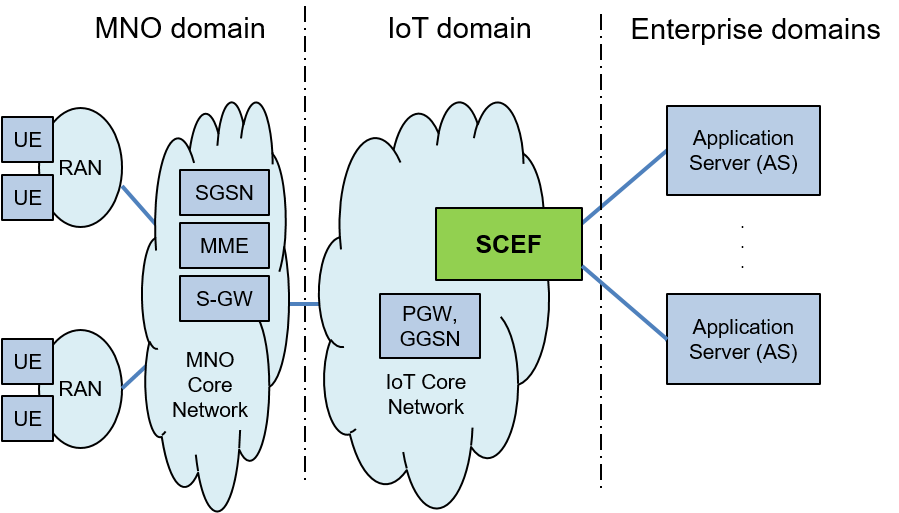3GPP SCEF Primer
SCEF (Service Capability Exposure Function) is defined by 3GPP in Release 13, with enhancements in later releases. Here, we provide a tutorial of SCEF.
History of SCEF
The first version of 3GPP TS 23.682 (Architecture for enhancements to facilitate communications with packet data networks and applications) for Release 13 was published in December 2014. In that version of the document, the definition of SCEF was provided:
The Service Capability Exposure Function (SCEF) is the key entity within the 3GPP architecture for service capability exposure that provides a means to securely expose the services and capabilities provided by 3GPP network interfaces.
That definition has remained the same since that initial version of the document, but the services and capabilities has drastically changed. Initially, only device triggers were defined – we’ll describe that and all the capabilities further down on this web page. Later, more capabilities were added, mostly for the SCEF to do monitoring and provide notifications of desired events to the AS (Application Server) regarding a UE.
To increase their market share of IoT devices, MNOs want IoT devices to directly connect to cellular networks. For that to happen, new modem technology is necessary. Modems need to be low cost, and also use less power to extend battery life. 3GPP has embraced several LPWA (Low Power Wide Access) technologies, such as, NB-IoT. To help meet the requirement of low power, the power-hungry protocol to establish IP data bearers has been replaced by extending the NAS protocol to allow small amounts of data to be transferred over the control plane. The IP stack is not necessary, so this type of transfer has been named NIDD (Non-IP Data Delivery).
The path for NIDD between UE and AS is defined by 3GPP to traverse the MME and SCEF.

This has caused a turn-around in the demand for SCEF. Initially, the exposing of capabilities was to facilitate Operators being able to charge for use of those capabilities. From the perspective of Operators, SCEF was regarded as a nice to have opportunity. Now, Operators need the SCEF so that LPWA technologies like NB-IoT can be deployed. And so,

SCEF in the Network
Below we illustrate a typical IoT core network, which could be provided either by an MVNO or by the MNO itself.

SCEF may reside at the edge of the IoT domain as shown above, or SCEF may lie completely within the IoT domain interfacing with an external API Management platform at the edge.
Features of SCEF
In Release 13, 3GPP defined SCEF to be the interface for small data transfers and control messaging between Enterprises and the Operators Core Network. SCEF provides APIs to the Enterprises for the small data transfers and control messages, and uses 3GPP-defined interfaces with the network elements in the Operators Core Network in its performance of its functions. The major features of SCEF are the following.
- APIs and AAA
- External ID
- NIDD
- Exposing Capabilities for New Revenue
We expand on these features in our description for the DN SCEF.
